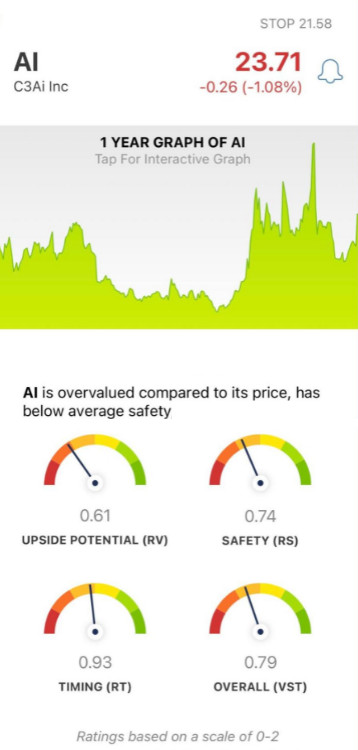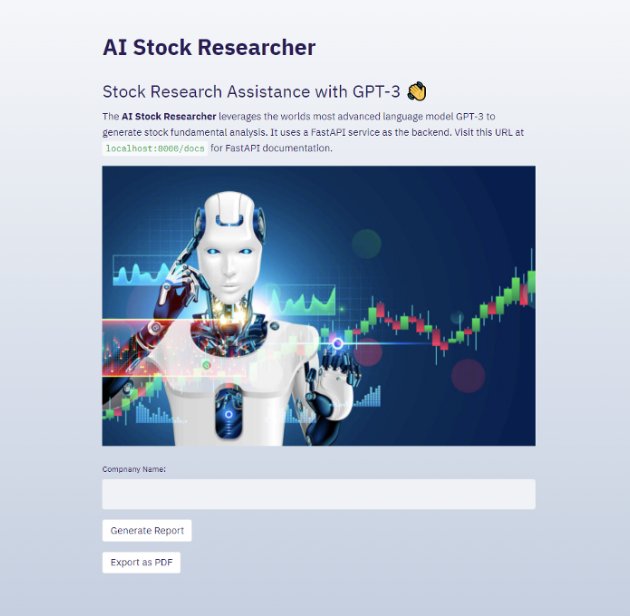20 Handy Facts For Deciding On Ai Investment App Websites
20 Handy Facts For Deciding On Ai Investment App Websites
Blog Article
Top 10 Tips For Assessing The Ai And Machine Learning Models In Ai Stock Predicting/Analysing Trading Platforms
In order to ensure that you have accurate, reliable, practical insights, it's vital to evaluate the AI and machine-learning (ML) models employed by prediction and trading platforms. Poorly designed or overhyped models could lead to inaccurate predictions and even financial loss. Here are 10 of the most effective strategies to help you assess the AI/ML models of these platforms.
1. Understanding the model's purpose and method of operation
Clarified objective: Determine the model's purpose whether it's used for trading at short notice, putting money into the long term, sentimental analysis, or managing risk.
Algorithm Transparency: Verify if the platform reveals what kinds of algorithms are employed (e.g. regression, neural networks for decision trees or reinforcement-learning).
Customization. Examine whether the model's parameters are tailored according to your own trading strategy.
2. Review Model Performance Metrics
Accuracy Verify the accuracy of the model's prediction. Don't rely only on this measurement, but it could be inaccurate.
Precision and recall. Evaluate whether the model accurately predicts price movements and minimizes false-positives.
Risk-adjusted returns: Find out if the model's forecasts yield profitable trades after taking into account risks (e.g. Sharpe ratio, Sortino coefficient).
3. Test the Model by Backtesting it
Historical performance: Use historical data to backtest the model to determine how it would have performed in the past under market conditions.
Out-of-sample testing The model should be tested using data that it was not trained on to prevent overfitting.
Analysis of scenarios: Evaluate the model's performance in various market conditions.
4. Make sure you check for overfitting
Overfitting Signs: Look out for models that perform extremely well when trained but poorly with untrained data.
Regularization techniques: Verify the application uses methods like regularization of L1/L2 or dropout to prevent overfitting.
Cross-validation. Make sure the platform is performing cross validation to test the model's generalizability.
5. Assess Feature Engineering
Relevant features: Verify that the model is based on relevant attributes (e.g. price volumes, technical indicators and volume).
Selecting features: Ensure that the application chooses features that are statistically significant and eliminate irrelevant or redundant information.
Updates to features that are dynamic Check to see if over time the model adjusts to new features, or changes in the market.
6. Evaluate Model Explainability
Interpretability - Make sure that the model gives an explanation (e.g. values of SHAP, feature importance) to support its claims.
Black-box model Beware of platforms that use models that are too complicated (e.g. deep neural networks) without explaining the tools.
User-friendly Insights: Verify that the platform provides actionable insight in a format traders can easily understand and use.
7. Assessing the Model Adaptability
Changes in the market: Check that the model is able to adjust to changes in market conditions (e.g. new regulations, economic shifts or black swan events).
Continuous learning: Make sure that the platform updates the model regularly with new data to improve the performance.
Feedback loops. Make sure that the model incorporates the feedback from users as well as real-world scenarios to improve.
8. Check for Bias or Fairness
Data bias: Ensure that the data regarding training are accurate to the market and free of bias (e.g. excessive representation in certain time periods or sectors).
Model bias: Determine if the platform actively monitors and reduces biases in the predictions made by the model.
Fairness. Make sure your model doesn't unfairly favor certain industries, stocks, or trading methods.
9. Calculate Computational Efficient
Speed: Test whether the model produces predictions in real-time with minimal latency.
Scalability: Determine whether the platform can manage several users and massive databases without affecting performance.
Resource utilization: Find out whether the model makes use of computational resources effectively.
Review Transparency and Accountability
Model documentation: Ensure that the model platform has comprehensive documentation on the model's design, the process of training and its limitations.
Third-party Audits: Determine if the model has independently been checked or validated by other organizations.
Error Handling: Verify whether the platform contains mechanisms that identify and correct mistakes in models or failures.
Bonus Tips
User reviews and cases studies Review feedback from users to get a better idea of how the model performs in real-world scenarios.
Free trial period: Test the accuracy and predictability of the model with a demo or free trial.
Support for customers: Make sure your platform has a robust assistance to resolve the model or technical issues.
These guidelines will help you evaluate the AI and machine learning models that are used by platforms for stock prediction to make sure they are transparent, reliable and compatible with your objectives in trading. Check out the top cool training about investment ai for site recommendations including ai for investing, stock analysis tool, ai stocks, incite ai, ai for investing, best artificial intelligence stocks, ai trading software, ai stock trading, ai investment platform, ai stocks to invest in and more.
Top 10 Tips For Evaluating The Reputation And Reviews For Ai Stock-Predicting And Trading Platforms.
Examining reviews and reputation of AI-driven stock prediction and trading platforms is essential to ensure reliability, trustworthiness and efficiency. Here are 10 tips for evaluating their reputation and reviews.
1. Check Independent Review Platforms
Look for reviews of trusted platforms, such as G2, copyright and Capterra.
The reason: Independent platforms offer unbiased feedback from real users.
2. Analyze User Testimonials and Study Case Studies
Use the platform site to view user reviews cases studies, testimonials and other details.
Why? These reports offer data on the performance of the system in real time as well as the satisfaction of users.
3. Evaluation of Expert Opinions, Industry Recognition
Tip: Check if industry experts or financial analysts, as well as respected publications have evaluated or recommended the platform.
Expert endorsements add credibility to the claims of the platform.
4. Social Media Sentiment
Tip: Monitor social media platforms like Twitter, LinkedIn or Reddit for comments and sentiments from users.
The reason: Social media provides unfiltered opinions and trends in the world of social media.
5. Verify that the Regulatory Compliance is in place
Tips: Make sure the platform is in compliance with financial regulations (e.g., SEC, FINRA) and privacy laws (e.g., GDPR).
Why: Compliance is crucial to ensure that the platform functions legally and ethically.
6. Transparency in Performance Metrics
TIP: Find out if the platform offers transparent performance metrics including accuracy rates, ROI and backtesting results.
Transparency helps build trust, and also allows users to assess the effectiveness of a system.
7. Check Customer Support Quality
Tips: Read reviews from customers about the platform and their ability to provide assistance.
Why: Having reliable support is key to resolving user issues and providing a positive overall experience.
8. Red Flags are a good indication of a poor review
Tips: Be aware of frequent complaints, such as unprofessional service, hidden costs or lack of regular updates.
Why: Consistently low feedback could indicate a platform issue.
9. Evaluation of User and Community Engagement
Tip: Check if the platform has an active user community (e.g. forums, forums Discord groups) and communicates with users frequently.
Why is that a strong user base is a sign of support and satisfaction.
10. Check out the history of the company
TIP: Study the company's history, leadership team, and previous performances in the area of financial technology.
Why: A track-record of accomplishment increases confidence in platform reliability and expertise.
Compare Multiple Platforms
Compare the reviews and reputation of multiple platforms in order to determine which platform is most suitable for your requirements.
If you follow these guidelines, you can thoroughly assess the credibility and reviews of AI trading and stock prediction platforms. Make sure you select an efficient and reliable solution. Check out the best ai investment app for blog recommendations including using ai to trade stocks, trader ai app, ai investment app, incite, ai stock trading bot free, copyright advisor, best ai trading software, ai stocks to invest in, investment ai, getstocks ai and more.